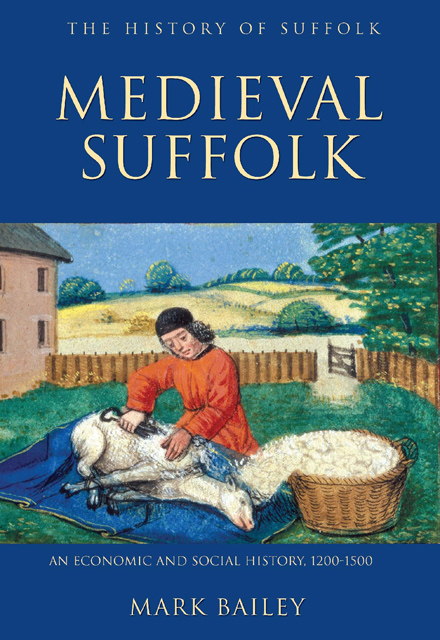Book contents
- Frontmatter
- Contents
- List of Plates
- List of Maps
- List of Tables
- Foreword
- Acknowledgements
- Note on Currency & Units of Measurement
- Abbreviations
- 1 Introduction
- 2 Landlords and their Estates, 1200–1349
- 3 Peasants and their Lifestyles, 1200–1349
- 4 The Agrarian Economy, 1200–1349
- 5 The Suffolk Landscape, 1200–1349
- 6 Towns and the Urban Environment
- 7 Commerce, Crafts and Industry
- 8 Pestilence, Rebellion and the Decline of Villeinage, 1349–1500
- 9 The Rural Economy, 1350–1500
- 10 ‘The World Turned Upside Down’: Rural Society, 1350–1500
- 11 Towns, Trade and Industry, 1350–1500
- 12 Conclusion
- Bibliography
- Index
6 - Towns and the Urban Environment
Published online by Cambridge University Press: 15 March 2023
- Frontmatter
- Contents
- List of Plates
- List of Maps
- List of Tables
- Foreword
- Acknowledgements
- Note on Currency & Units of Measurement
- Abbreviations
- 1 Introduction
- 2 Landlords and their Estates, 1200–1349
- 3 Peasants and their Lifestyles, 1200–1349
- 4 The Agrarian Economy, 1200–1349
- 5 The Suffolk Landscape, 1200–1349
- 6 Towns and the Urban Environment
- 7 Commerce, Crafts and Industry
- 8 Pestilence, Rebellion and the Decline of Villeinage, 1349–1500
- 9 The Rural Economy, 1350–1500
- 10 ‘The World Turned Upside Down’: Rural Society, 1350–1500
- 11 Towns, Trade and Industry, 1350–1500
- 12 Conclusion
- Bibliography
- Index
Summary
Boroughs, Markets and Fairs, 1200–1349
At the end of the eleventh century Suffolk contained three of England’s most important towns and four other boroughs. In 1066 Ipswich had been comfortably the county’s largest town, but was strongly associated with resistance to William I’s conquest, and by 1086 – the date of the Domesday Survey – had suffered severe depopulation and destruction. In stark contrast, Bury St Edmunds and Dunwich flourished under Norman patronage and expanded rapidly between 1066 and 1086, by which date they both rated among England’s top ten towns. The Normans actively developed Dunwich as a commercial centre and port to rival Ipswich, and its impressive growth continued during the twelfth century, so that by 1200 it was the only place in Suffolk to be ranked among England’s ten wealthiest towns. However, none of Suffolk’s towns was large by modern standards, and even Dunwich’s population in 1086 probably did not exceed 3,000. Domesday Book also records the existence of burgesses at Beccles, Clare, Eye and Sudbury; markets at Blythburgh, Haverhill, Hoxne, Kelsale and Thorney (Stowmarket); and a fair at Aspall. Others must have escaped mention, and there is no doubt that the urban and commercial structure of late eleventh-century Suffolk was already well developed by the standards of the time.
Demographic and economic expansion over the next two centuries resulted in a two- to threefold growth in the population of many of these early boroughs and towns, peaking in the early fourteenth century. The expanding economy also encouraged the foundation of new boroughs, markets and fairs, which reduced the costs and risks of trade by bringing traders together in an environment that offered some legal protection. It has been estimated that between c. 1100 and c. 1349 the Crown granted charters for over 2,000 weekly markets and 400 boroughs in England. After 1100 hardly any new boroughs were created in Suffolk, although the scale of market and fair foundation was prodigious.
- Type
- Chapter
- Information
- Medieval SuffolkAn Economic and Social History, 1200-1500, pp. 116 - 151Publisher: Boydell & BrewerPrint publication year: 2007



